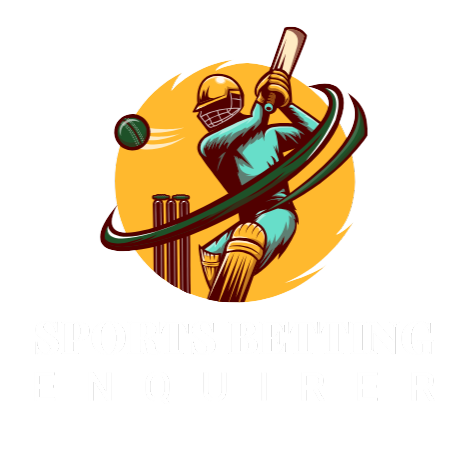In the fast-paced world of sports betting, success often hinges on more than just luck and intuition. Behind the scenes, a intricate dance of numbers and calculations takes place, ultimately shaping the profit margins of both bookmakers and bettors. Join us as we dive into the captivating world of sports betting economics, exploring the intricate web of factors that determine the profitability of this high-stakes industry.
Understanding the Basics of Profit Margins in Sports Betting
When it comes to sports betting,understanding profit margins is crucial for success. Profit margins represent the percentage of revenue that a sportsbook keeps as profit after paying out winnings to bettors. These margins are essential for sportsbooks to stay in business and continue offering betting opportunities to customers.
Factors that Influence Profit Margins in Sports Betting:
-
- The odds: The odds set by the sportsbook directly impact profit margins. Higher odds for an outcome mean lower profit margins for the sportsbook.
- Volume of bets: The total amount wagered on a particular event can also affect profit margins. Sportsbooks aim to balance the action on both sides to minimize risk and maximize profits.
- Competitive landscape: The level of competition among sportsbooks can influence profit margins.More competition often leads to lower margins as sportsbooks try to attract customers with better odds and promotions.
Calculating Profit Margins:
| Revenue | Expenses |
|---|---|
| $100,000 | $70,000 |
To calculate profit margins in sports betting, subtract total expenses (such as payouts to winning bettors) from total revenue (amount wagered by all bettors). Divide the result by total revenue and multiply by 100 to get the profit margin percentage.
Factors Influencing Profit Margins in Sports Betting
are multifaceted and complex. Understanding the economics behind these margins can provide valuable insights for bettors looking to maximize their returns. One key factor is the vigorish, commonly referred to as the “vig” or “juice,” which is the commission charged by sportsbooks on each bet. The vig is essentially the sportsbook’s built-in profit margin, and it can vary depending on the type of bet and the market conditions.
Another critically important factor that influences profit margins in sports betting is the odds offered by sportsbooks. The odds determine the potential payout for a winning bet, and sportsbooks adjust them based on various factors such as team performance, player injuries, and public sentiment. Sportsbooks aim to set odds that attract balanced action from bettors on both sides of a wager, ensuring a profit margin regardless of the outcome. Understanding how odds are set and how they can fluctuate can definitely help bettors make informed decisions when placing bets.In addition to the vigorish and odds, market forces and competition among sportsbooks also play a role in determining profit margins. In a competitive market, sportsbooks may adjust their margins to attract more customers or differentiate themselves from their competitors. Factors such as marketing strategies, customer loyalty programs, and the overall reputation of a sportsbook can influence bettor behavior and ultimately impact profit margins. By considering these various factors and staying informed on market trends, bettors can better navigate the complex landscape of sports betting and possibly increase their profitability.
Analyzing Profit Margins in Different Types of Sports Bets
When it comes to sports betting,understanding profit margins is crucial for success. Different types of sports bets yield varying profit margins, impacting your potential earnings. By crunching the numbers and analyzing the economics of sports betting profit margins, you can make more informed decisions and increase your chances of profitability.
One key factor to consider is the type of sports bet you are placing. Spread betting,over/under bets,moneyline bets,and prop bets all come with their own profit margins. Spread betting, such as, typically has a higher profit margin due to the added risk involved. Conversely, moneyline bets tend to have lower profit margins but offer a more straightforward win/loss outcome. Understanding these differences can definitely help you strategically choose which bets to place.
Additionally, analyzing past data and trends can give you valuable insights into profit margins. By studying past performance, odds, and outcomes, you can identify patterns that may indicate favorable betting opportunities. Utilizing this data alongside your knowledge of profit margins can help you make more calculated bets and potentially increase your winnings in the long run.
Strategies for Maximizing Profit Margins in Sports Betting
When it comes to maximizing profit margins in sports betting, understanding the economics behind it is indeed key. By crunching the numbers and analyzing trends,bettors can make more informed decisions that ultimately lead to higher profits. One strategy to consider is focusing on value bets, where the odds offered by bookmakers are higher than the true probability of the outcome.
Another way to boost profit margins in sports betting is by diversifying your bets. Rather of putting all your eggs in one basket, spread your bets across different sports, leagues, and markets. This can help mitigate risks and increase your chances of winning. Additionally, keeping track of your bets through a detailed spreadsheet can provide valuable insights into your betting patterns and help you identify areas for betterment.
Lastly, staying disciplined and managing your bankroll effectively is crucial for long-term success in sports betting. By setting limits on how much you’re willing to wager and sticking to a budget, you can avoid making reckless bets and protect your profits.Remember, it’s not about winning every bet, but rather making smart decisions that lead to overall profitability.
The Future of Profit Margins in the Sports Betting Industry
Sports betting has long been a popular form of entertainment, with millions of people placing bets on their favorite teams and athletes every year. But as the industry continues to evolve, so too do the economics of profit margins in this competitive market. With advancements in technology and an increasing number of online betting platforms, is a topic of great interest.
One key factor that will impact profit margins in the sports betting industry is the level of competition among betting operators. As more companies enter the market, the competition for customers becomes more intense, leading to potential decreases in profit margins. Operators must continually innovate and offer competitive odds and promotions to attract and retain customers in this crowded market.
Another important consideration when analyzing the future of profit margins in sports betting is the legalization of betting in more states and countries around the world. As regulations change and more markets open up, operators have the opportunity to expand their customer base and increase their profits. However, with this expansion also comes increased costs and regulatory hurdles that can impact profit margins.
Q&A
Q: What exactly are profit margins in sports betting?
A: Profit margins in sports betting refer to the percentage of wagers that sportsbooks keep as profit.Q: How do sportsbooks make money?
A: Sportsbooks make money by adjusting the odds in such a way that they have a built-in profit margin on each wager placed.
Q: What factors can affect profit margins in sports betting?
A: Factors such as market competition, betting volume, and the sportsbook’s pricing strategy can all impact profit margins in sports betting.
Q: Are profit margins in sports betting fixed or variable?
A: Profit margins in sports betting can be both fixed and variable, depending on the specific circumstances and market conditions.
Q: How do sportsbooks calculate their profit margins?
A: Sportsbooks calculate their profit margins by analyzing the total amount of wagers placed and subtracting the total amount paid out in winnings.
Q: Are there any strategies that sports bettors can use to maximize their profits?
A: Sports bettors can maximize their profits by shopping around for the best odds, managing their bankroll effectively, and utilizing data and analytics to make informed betting decisions.
Q. What are the risks associated with sports betting profit margins?
A: The risks associated with sports betting profit margins include the potential for losses due to unforeseen events, fluctuations in market conditions, and the inherent volatility of sports outcomes.
Key Takeaways
In conclusion, understanding the economics of sports betting profit margins is essential for anyone looking to make informed decisions in the world of gambling.By crunching the numbers and analyzing the data, bettors can gain valuable insights into the inner workings of the industry and maximize their chances of success. Whether you’re a seasoned pro or just starting out, the key to long-term profitability lies in a solid understanding of the numbers behind the bets. So next time you place a wager, remember to consider the economics at play and make your decisions wisely. Happy betting!




